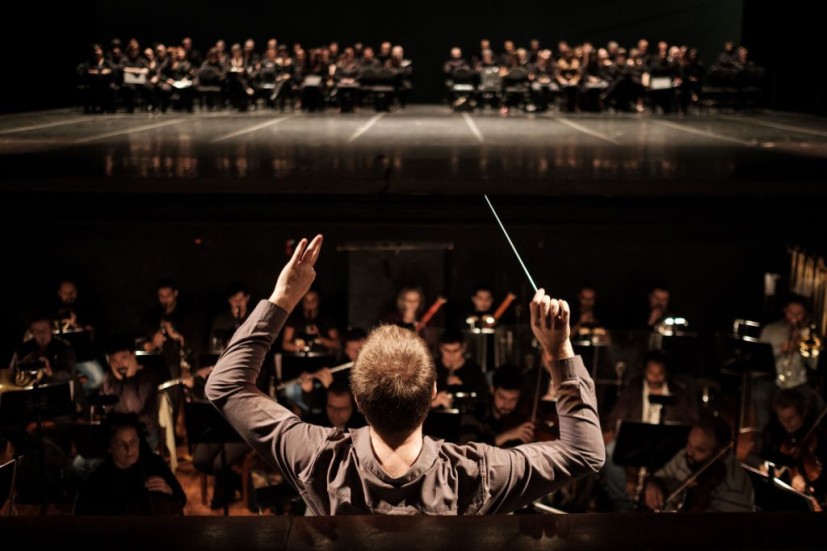Classical music is a catchall term comprising varying types of music across the span of over a thousand years of history. Not to mention, the different ages and the movements within that inspired many masters to create the pieces they're known for.
It can be quite daunting to start your journey in classical music, not knowing what to listen to or what some songs or even called. Thus, we have listed down five of the top pieces, that we believe, are the perfect introduction to this symphonious and diverse world.

1. 'Nocturne in E flat' by Frédéric Chopin
Chopin is one of the masters that immediately comes to mind when it comes to solo compositions for the piano, especially his first set of three pieces called the "Nocturnes." These pieces are a turning point in the career of the then-twenty-or-so-year-old.
The "Op. 9" or "Opus 9 Nocturnes" is a first glimpse of the master composer's proclivity for musical spontaneity when it comes to the keys. Among the three, the "E flat" is the most popular, mainly for being featured and referenced in a slew of different mediums.
Once you give it a listen, you'll fall in love with the fast-paced passages all within the higher range, all while maintaining a sense of "softness" and "gentleness."
2. 'Canon in D' by Johann Pachelbel
Pachelbel's "Canon in D" is another one of the most heavily borrowed or referenced classical pieces in modern times. You probably have heard this one at your cousin's or aunt's wedding, let alone in films or the internet.
Because of this particular song, Pachelbel is widely regarded as the "first one-hit wonder." This is mostly due to his other 17th-century works, which were aplenty, not surviving the test of time, aside from this straightforward yet sublime piece.
It might even be thanks to this simplicity that it has lasted within the psyche of modern-day listeners. With its tender repetitions and anchored rhythm, it's easy to come back to it after a hard day at work.
Read also: 'Anybody's Piano': New AI Integration Enables Disabled Musicians From Tokyo to Perform Beethoven
3. 'The Firebird' by Igor Stravinsky
Opposite to Pachelbel's soothing piece is one of the more "high-octane" compositions within this list, Stravinsky's "Firebird."
Born in 1882, this Russian composer otherwise achieved notoriety for penning "The Rite of Spring," whose particular historical significance was magnified by the fact that it incited a riot during one of its premiers.
"Firebird" was initially intended as part of a ballet and depicts a scene including an evil sorcerer named "Prince Ivan," alongside a mythical creature and namesake of the piece, "Firebird." This background information gives context to its dark and ominous soundscape, which gives it that characteristic edge.
4. 'Clair de Lune' by Claude Debussy
With a return to the softer solo piano pieces, the next entry to this list highlights Debussy's perennial work dubbed "Clair de Lune."
The title itself directly translates to "Moonlight," which is a fitting name for the magical and melancholic scene it's trying to depict: of lunar light gently reflecting off the water.
This imagery shares the key philosophies of impressionist creation, including a close and vivid interpretation of life in the freest of ways. This movement occurred during most of Debussy's life and career which is partly why it's closely linked to the composer.
Certainly, "Clair de Lune" elicits the same awestruck emotion as one gets when peering at the eternal beauty of the moon.
5. 'Swan Lake' by Pyotr Ilyich Tchaikovsky
Tchaikovsky is one of the best melodic composers in history and the piece of his that best supports that claim is the heart-wrenching and gripping theme he made for the ballet "Swan Lake."
It might be familiar to you because of a particular emotionally charged scene in the 2000 coming-of-age film "Billy Elliot, or perhaps it might be because of the ballet itself.
Either way, the lasting impression is for sure due to the attention-grabbing violin tremolos and the swooping sounds of a solo oboe taking charge of the main melody, before it eventually swells into a crescendo not unlike the composition's namesake of the swan trying to take off.
And in the climax of the piece, an explosive symphony courtesy of the full strength of the orchestra, brilliantly playing around the rich melodies and booming dynamics. Certainly, a piece that will be engraved in any classical music explorer's mind.